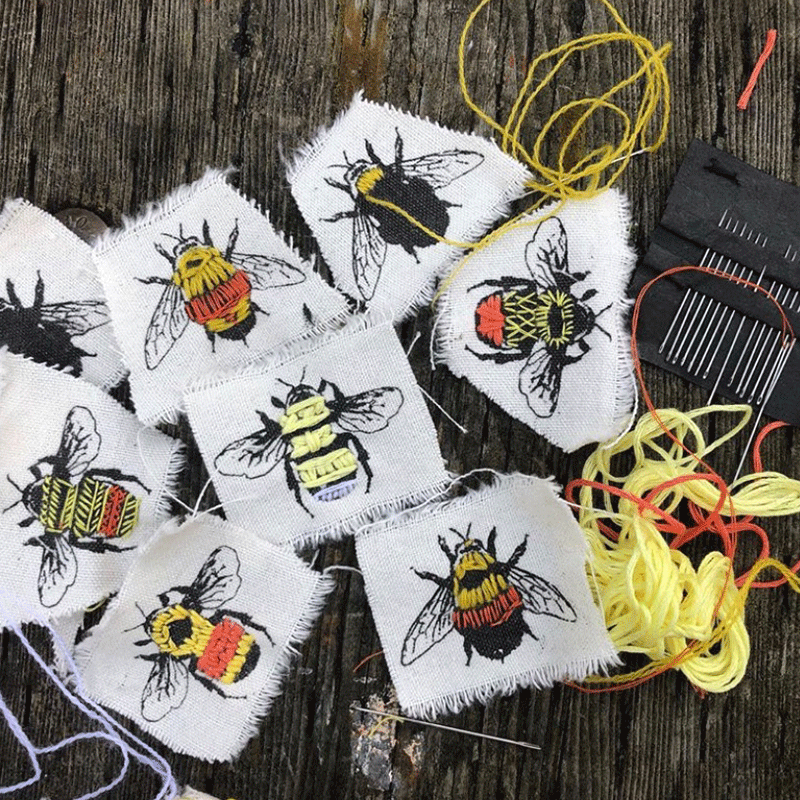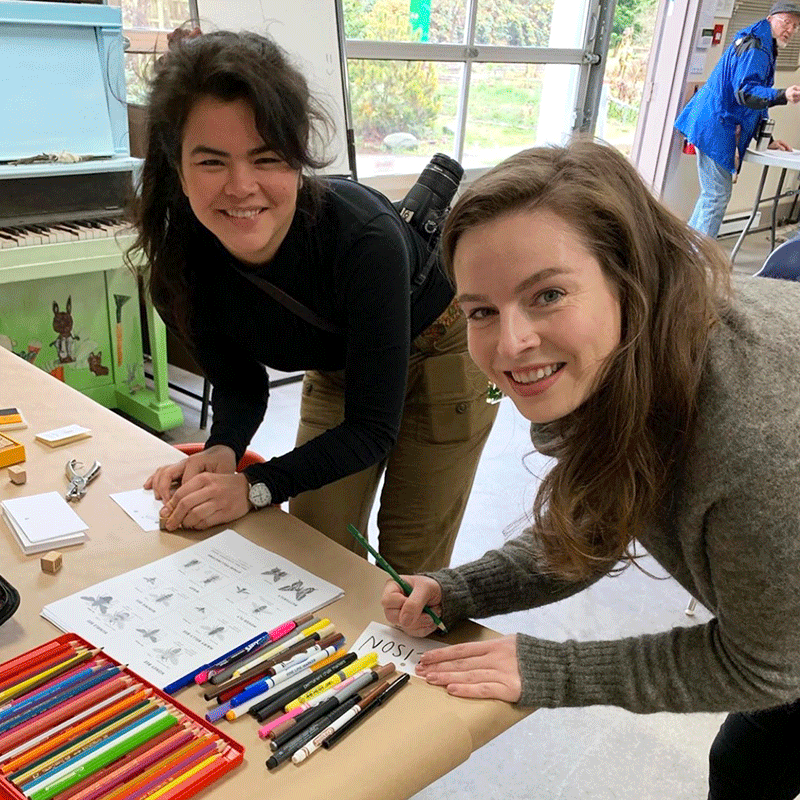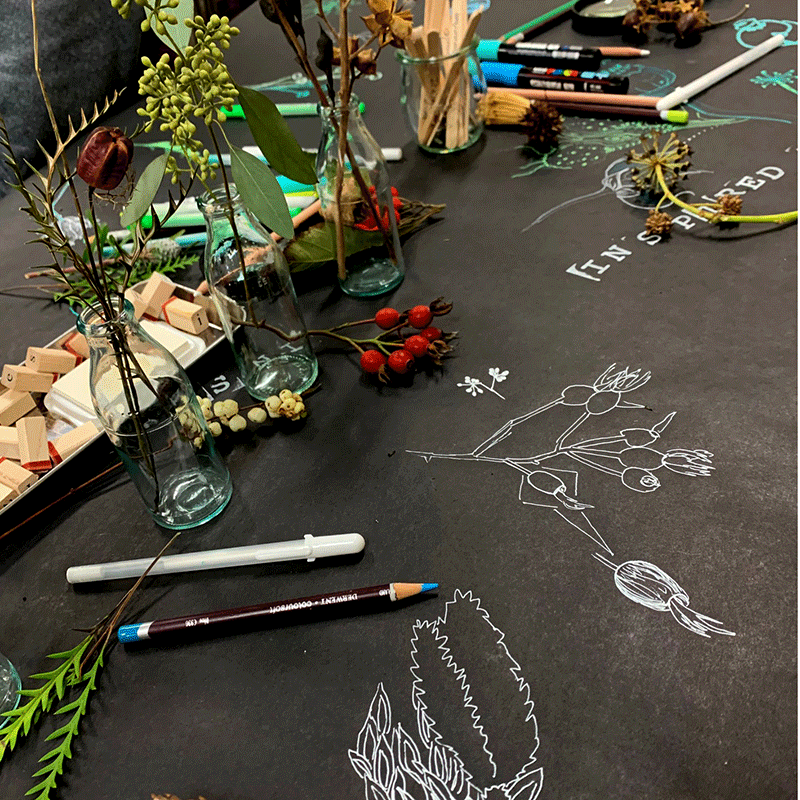Quarterly Newsletter for the Native Bee Society of British Columbia
- BC Native Bee Society
- Apr 22, 2020
- 5 min read
April 2020
Volume 1 | Issue 1
-----
Editors-in-chief: R. Waytes & C. Thuring
Copy-editor: L. Williams
Writers: S. Johnson, J. Guy & T. Kelly
-----
With special thanks to: C. Ly & E. Watler

We are excited to present the first issue of our quarterly newsletter! We appreciate all of our members for your interest in and passion for native bees. Come learn about the latest society news: read about the birth of our bee society, hear about our fun first AGM, and learn a little more about one of the most well-known bee species in Canada.
And happy Earth Day! We hope that you are able to celebrate the beauty of the natural world with us. Let's all do our part to help preserve this wonderful planet (and all the bees that live here)!
The Birth of a Native Bee Society

Hello and welcome, beeple of British Columbia! My name is Sarah Johnson, and I am the founding President of the Native Bee Society of BC (NBSBC). I am excited to introduce you to our new society and would like to paint you the picture of how it all came to be(e).
The Native Bee Society of BC has been long in the making. What began years ago as the pipe dream of a handful of bee scientists, educators, and artists has blossomed into this wonderful new hub for bee experts and enthusiasts to connect, collaborate, and create, with the ultimate goal of supporting the astonishing diversity of bees native to our province.

British Columbia has always been home to a spectacular set of wild pollinators, including over 500 species of native bees, and innumerable flies, wasps, beetles, moths, butterflies, birds, and more. Thus it is no surprise that our province has also attracted a diverse set of humans who are fascinated by the astounding relationships between plants and pollinators.
Over the past decade, many of us have been independently nurturing our love of bees without a central network to plug into. Disparate programs, projects, and people have all been working towards the same goal but without a single supportive community of expertise. There was clearly a need and desire for a centralized group of bee-loving British Columbians, but no one stepped up to fill the vacuum. Until last winter, when the right set of circumstances began to coalesce.

Bee-ing There: AGM a brilliant success
by Jasna Guy and Tyler Kelly

Members of the NBSBC Board of Directors at the AGM.
From back left, clockwise: Christine Thuring, Jasna Guy,
Tyler Kelly, Martina Clausen, Linc Best, Leslie Williams,
Chanta Ly, Marika van Reeuwyk, Brian Campbell,
and Sarah Johnson. Photo by J. Guy.
Sunday November 17, 2019 marked the first event hosted by the newly minted Native Bee Society of British Columbia.Hosted by the Sharing Farm Society at Terra Nova Park in Richmond, B.C., the farm and surrounding park were the ideal location to launch our new
society. Our guests were greeted at the door by Chanta Ly, society treasurer. Opening ceremonies and introductions were given by the President of the society, Sarah Johnson, PhD Candidate and bumblebee expert from SFU. Lori Weidenhammer gave a moving acknowledgement of the First Nations Peoples who have lived on this land since time immemorial. The day was packed with informative presentations by some of the society’s experts. Bee taxonomist Lincoln Best spoke about the incredible diversity of native bee species in British Columbia. Dr. Sandra Gillespie of the University of the Fraser Valley spoke about the threats invasive species pose to native pollinators. Brian Campbell of West Coast Seeds gave an informative presentation on managed bees, including Blue Orchard Mason Bees. Following the presentations, guests were invited to check out display tables, talk with bee and gardening experts, look at specimen collections, and engage in nature-themed art
activities. There was a raffle that included prizes such as works of art by local artist and society director Jasna Guy.
We wish to thank all our visitors, guests and new members for sharing this day with us. We are passionate about cultivating awareness about our native bees, and are thrilled that you are part of this community that appreciates and protects our natural environment.
From left to right, 1) Tyler Kelly demonstrates B.C. bee diversity to enthusiastic new members. 2) Marika van Reeuwyk and Allison Dennert create name tags at Lori Weidenhammer’s art activity table. 3) A display of Thanushi Eagalle’s bumble bee embroidery activity. 4) Jasna Guy’s “Inspired by Nature” drawing table. Photos by S. MacTavish (1) and J. Guy (2, 3, 4).
The Pollinator Link
by Sarah Johnson
The European honey bee, Apis mellifera, is one of the most well-known bees worldwide and is often a focal point for people concerned with declines in bee populations. In North America, honey bees are an introduced, non-native species. They are a social species with colonies that consist of a queen and worker bees (her daughters). A single honey bee colony can produce up to 50-60,000 bees, whereas the majority of native bee species are solitary: a single female collecting pollen to feed her offspring, usually only a handful of eggs. Honey bee queens can live for multiple years, as opposed to native species, whose queens typically live up to a year.

There seems to be a lot of well-intentioned confusion about honey bees and how they relate to native bee communities, as well as to whether they are endangered. Often honey bees are the focus of campaigns to "Save the Bees." However, honey bees are not a native species to North America, are not at risk of extinction (in fact, hive numbers have been increasing in most areas of Canada over the past few decades), and are quite different from the vast majority of our wild species. Scientific evidence increasingly shows that honey bees compete directly with native bees, and likely have a negative impact on native bee populations through, for example, competing for food resources and transferring diseases.
It’s helpful to think of honey bees as livestock necessary to ensure pollination in our large-scale industrialized agricultural system. Backyard beekeeping is worthwhile for people who are specifically interested in animal husbandry, agriculture, or products of the hive such as honey and beeswax. Responsible beekeepers can reduce the negative impacts of honey bees on native bees by regularly monitoring for diseases and insuring forage is available for both honey bees and native bees.
Upcoming Events
Due to COVID-19 concerns, our spring and early summer events have been cancelled. For more information and updates on our events, please visit our 'Events' page, here. While we may not be able to see you in person, we would love to hear from our members. If you have any interesting bee sightings to report or questions to ask, let us know! We may feature them in our next newsletter.
Find us on:
Facebook: www.facebook.com/BCNativeBees/
Instagram: bcnativebees
Twitter: @BCNativeBees
Interested in getting involved with the society?
Contact us at: bcnativebees@gmail.com










Comments